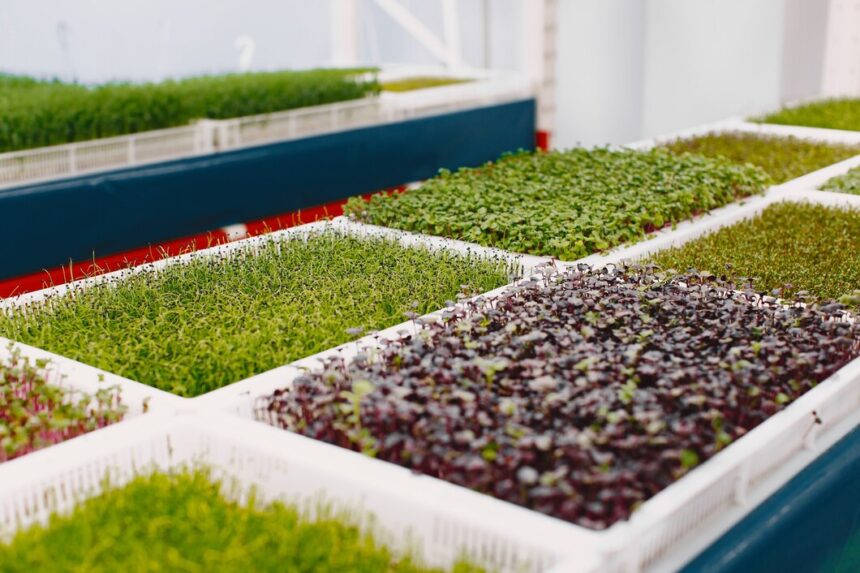Aquaponics, a sustainable farming method that combines aquaculture (fish farming) with hydroponics (soil-less plant cultivation), offers an innovative solution for South African farmers seeking to optimize water use and improve crop yields. Here’s a comprehensive guide to starting an aquaponics system in South Africa:
1. Understand the Basics
Aquaponics integrates fish and plant cultivation in a closed-loop system. Fish waste provides nutrients for plants, while plants help filter and clean the water for the fish. Understanding this symbiotic relationship is crucial for managing and maintaining a successful system.
2. Choose the Right System
Several aquaponics system designs exist, including:
- Media Bed System: Uses grow beds filled with a growing medium like gravel or clay pellets to support plants.
- Nutrient Film Technique (NFT): Plants grow in a shallow stream of nutrient-rich water.
- Deep Water Culture (DWC): Plants float on rafts in nutrient-rich water with their roots submerged.
Select a system that suits your space, budget, and farming goals.
3. Site Selection and Preparation
Choose a location with ample sunlight or access to grow lights, good ventilation, and proximity to a water source. In South Africa, where sunlight is abundant, leveraging natural light can enhance plant growth and reduce energy costs.
4. Build or Buy the System
You can either build your own aquaponics system or purchase a pre-designed kit. Building your own requires materials like fish tanks, grow beds, pumps, and pipes. For a DIY approach, numerous online resources and local suppliers can provide guidance and materials.
5. Choose Fish and Plants
Select fish species that thrive in your local climate and are suited for aquaponics, such as tilapia, trout, or catfish. For plants, opt for those that grow well in aquaponics systems, including leafy greens (lettuce, spinach), herbs (basil, mint), and certain vegetables (tomatoes, peppers).
6. Establish the Cycle
Start with a cycle to establish beneficial bacteria that convert fish waste into plant nutrients. This process, known as “cycling,” can take several weeks. During this period, monitor water quality parameters such as pH, ammonia, nitrite, and nitrate levels to ensure a stable environment for both fish and plants.
7. Monitor and Maintain
Regularly check water quality, fish health, and plant growth. Common water quality tests include pH, ammonia, nitrite, and nitrate levels. Maintain proper feeding schedules for the fish and ensure that the plants receive adequate nutrients.
8. Address Potential Challenges
Be prepared to handle challenges such as disease outbreaks, pests, and water quality issues. Implement biosecurity measures to prevent disease and pests, and use integrated pest management practices to protect your plants.
9. Explore Market Opportunities
Aquaponics can produce both fish and fresh produce. Research market opportunities for selling your products, whether through local farmers’ markets, restaurants, or direct-to-consumer sales. Highlight the sustainable and local aspects of your produce to attract environmentally-conscious consumers.
10. Educate Yourself and Others
Continuously educate yourself on the latest aquaponics techniques and innovations. Join local aquaponics or agricultural groups to share knowledge and experiences. Consider offering workshops or farm tours to promote aquaponics and engage with the community.
Starting an aquaponics system in South Africa can offer numerous benefits, including efficient water use, reduced environmental impact, and high-quality produce. By following these steps, South African farmers can successfully implement and manage an aquaponics system, contributing to sustainable agriculture and enhancing their farm’s productivity.
Join 'Farmers Mag' WhatsApp Channel
Get the latest Farming news and tips delivered straight to your WhatsApp
CLICK HERE TO JOIN






